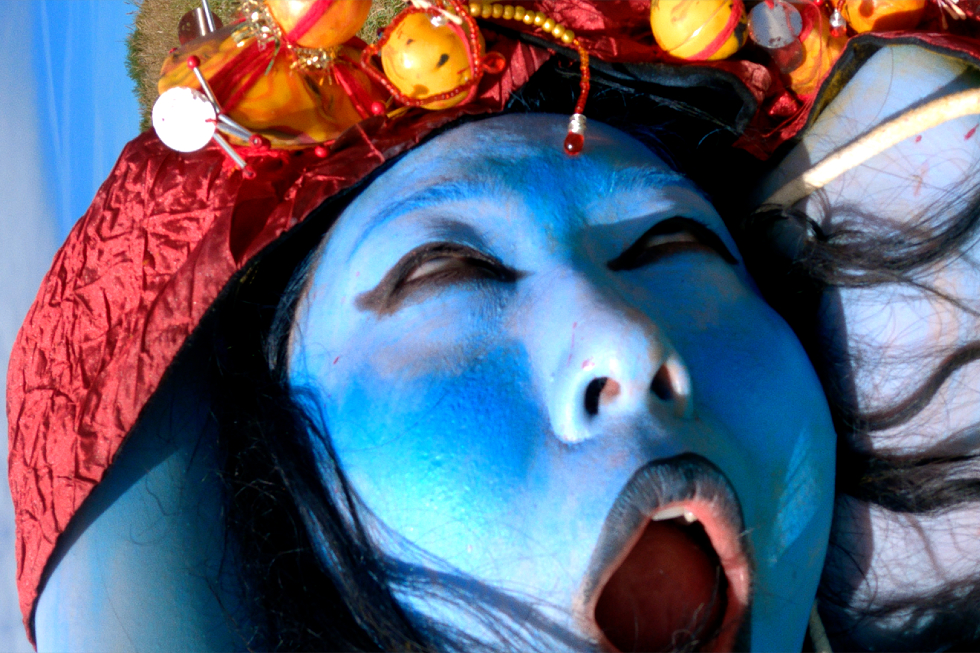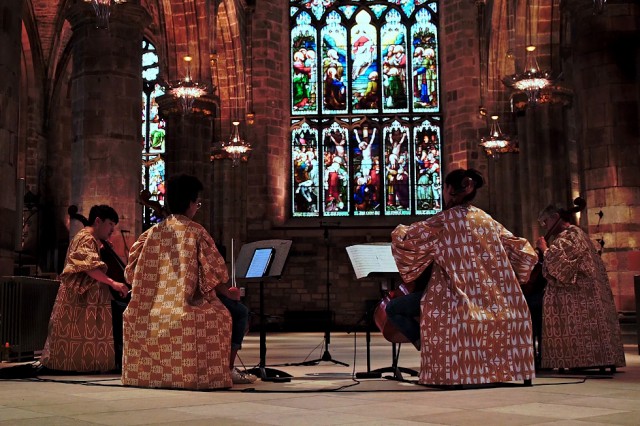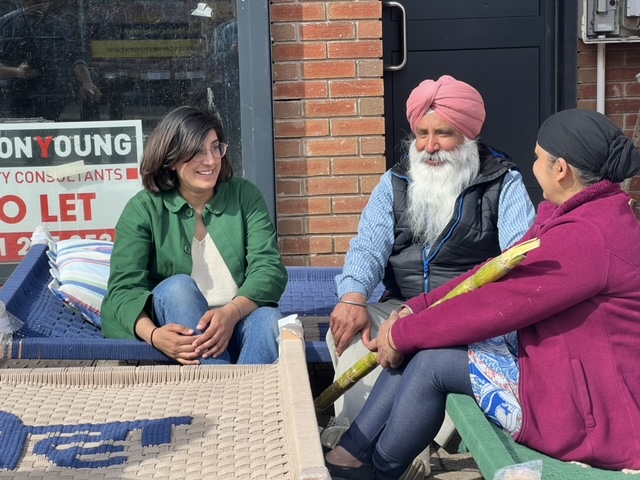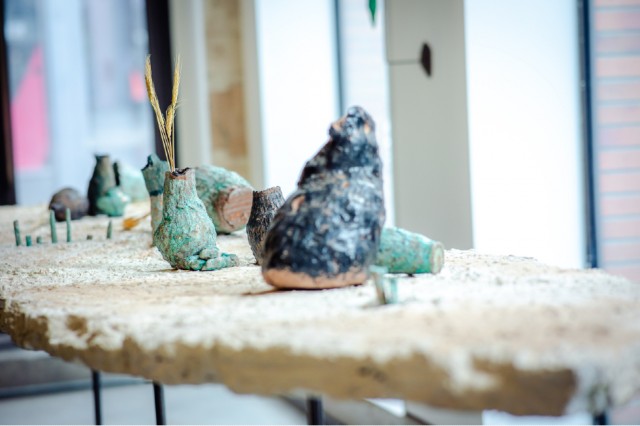Strategies for a decolonised future: breathe, spirit and life – Reviewed

Sometimes difficult to decipher, Mike Pinnington nevertheless finds much to recommend in current Bluecoat exhibition, breathe, spirit and life…
When the Bluecoat was founded in the early decades of the 18th century, it was as a charity school for children living in poverty. This apparent act of goodwill and benevolence is, however, undercut with the knowledge that it was funded with the ill-gotten gains of the Transatlantic Slave Trade.
This is the departure point for current exhibition breathe, spirit and life 呼吸、靈魂與生命, which seeks to respond to those paradoxical beginnings, and repurpose the building as ‘a communal space for cleansing, detoxification and purification as a collective decolonial healing process.’
The first artist encountered is Kiara Mohamed Amin, whose work centres joy, healing and community as radical acts. He has previously addressed the ways in which Black lives have enriched Liverpool. Here, Mohamed Amin’s film Black Presence, is a eulogy of sorts to feminist, author and anti-racism campaigner, Azeezat Johnson, who died earlier this year. A generous work, it makes the space for us to slow down, to contemplate, to be with ourselves and our own thoughts. It asks “Where do you have space to dream?” In this room is a decent place to start thinking about the answers, Mohamed Amin seems to suggest.
Awaiting us in the second space are four music stands, over which are performers’ matching garments. These items are from and tally with Thulani Rachia’s project obuyile, a composition for four cellists presented on a pair of flat screen TVs. As an absolute sucker for the cello, I find it is beautiful, mournful. Crucial in communicating Rachia’s message about attempting to forge relationships amid brutal environments and violent colonial histories, to my ears the instrument seems uniquely suited to strike a balance between the two.

But there is a problem: there are not insignificant periods when both screens fall silent. Mistime your arrival, and you will just see the stands, jackets, and a pair of blank screens. Is this intentional, a means of conveying negative space rather than presence? Stony silence rather than convivial conversation? It’s unclear and therefore seems something of an oversight – no doubt, more impatient visitors will simply move on, missing out on the heart and soul of a work worth experiencing to the full.
Another space full of absences follows, with Sulaïman Majali’s ripe fruits before battle. Shudders, too, as its assorted paraphernalia (some of which is arranged on an old gym mat), including an umpire’s chair, rack of sports balls, and a ticking clock, conjures up long buried memories of school PE lessons. Also on the mat is a flipchart – that ever-present feature of away days and team building exercises. On it has been scrawled lines of a poem:
Autumn, mourning the exile of summer, buries us in the discarded failures of spring
Planting a tree is also a kind of burial
And even if the king planted an ocean of them, winter would still come to claim its dead
But who will watch the dead grow with us?
Into this unstoppable life, who will feed us these ripe fruits before battle?
Additionally, there is a disembodied voice emanating from a smart phone with a cracked screen, plugged into a socket on the far wall of the installation. Its soundtrack is one of stumbling speech patterns, all ums and errs. It produces a picture of awkward scenarios in which people are unable to make themselves properly understood. Ripe fruits’ arena, what the artist refers to as a ‘clowning of community under capital through a poetics of the court’, is a sometimes puzzling mix of poignant and gnomic. It seems to speak of ghosts, of failures of (international) diplomacy; the personal, and the more ineffable, forever just out of reach.

In the Bluecoat’s corridor you’ll find Roo Dhissou’s series of four-legged woven Punjabi furniture called manjis. They’re very beautiful, tactile, utilitarian. Nearby signs ask us to remove our shoes before we take a seat. On multiple visits, I’ve yet to see anyone attempt to sit on them. A shame, because Dhissou’s socially engaged practice is rooted in working with communities (as seen above) to explore how shared and individual identities manifest.
In the final ground floor room is Emii Alrai’s installation, An Ancient Quiver, which reconfigures the space as archaeological dig. With its melange of cardboard, hotchpotch of sculpture and plinths, it should be a mess. Instead, it draws you in and fascinates. In its plaster and sand covered tiles you can make out an invented patchwork map of colonialism, with territories carved up and pillaged by European invaders. The assorted sculptural displays (below) might represent the spoils of empire. An artist interested in history, geography and native mythologies, Alrai’s intelligent work leaves us pondering unsettling truths about plundered artefacts, ownership and nationalist nostalgia.

Ascending the stairs to the final work, little could have prepared me for Soojin Chang’s JADE BABY BAMBOO SPINE. Made in collaboration with Jade O’Belle, Aditya Surya Taruna a.k.a. Kasimyn, and Georgie Rei-n Lo, through the lens of ritual, the film interrogates themes of surrender, violence, pleasure and power. To do so, it borrows from death practices found across the world, including in Korea, Taiwan, Tibet, Cornwall, and England. The result is a panoply of mystical bordering on mystifying imagery. As if in agreement, part way through, a bewildered dog shows up. It looks quizzically around, as if to ask: “what the hell is happening here?”
From black and white into colour, dream state into consciousness, we see a forest spirit, a kind of Djinn, imbibed elixirs, and a stone circle; binaries of ecstasy and death, master and slave, and liminal phases fill the frame. Emphasising all of this is an effective score, with lulls and crescendos to match the narrative. It is an absurdly intoxicating, watchable yet complex film, one full of ambiguity about humanity’s relationship to each other, to nature and the land.
It is a wild ride with a deep underlying message, making for a grandstand finish to an exhibition that sometimes lacks clarity and cohesion across its constituent parts. Unless, for example, you carry the interpretation (a lengthy four sheets) around with you, and you’re prepared to frequently refer to it, you won’t necessarily know what is happening in any given space. Even then, this is a challenging show.
Contextualisation, coherence, I think it’s fair to say, isn’t breathe, spirit and life’s strong suit. But where it succeeds is in presenting a diverse range of artists whose work contains and responds to themes on or near to the surface of urgent local and global conversations; artists who, together, put forward strategies for a decolonised future.
Mike Pinnington
breathe, spirit and life 呼吸、靈魂與生命 continues at Bluecoat until 29 January 2023
Images: Soojin Chang (In collaboration with Georgie Rei-n Lo, Jade O’Belle, and Aditya Surya Taruna a.k.a. Kasimyn) – JADE BABY BAMBOO SPINE; obuyile, usuku owesikhombisa (day 7), 2021, video still. Photo by Rachel McBrinn; Roo Dhissou – Searching for Sangat, 2022, Live action. Image courtesy of Frederick Hubble; Emii Alrai, An Ancient Quiver. Bluecoat, Liverpool installation view, 2022. Photo by Tommy Wong





